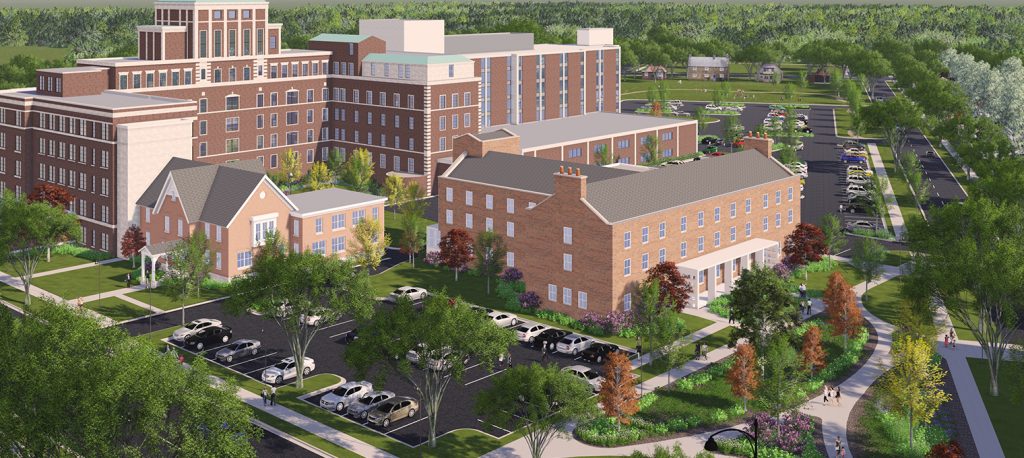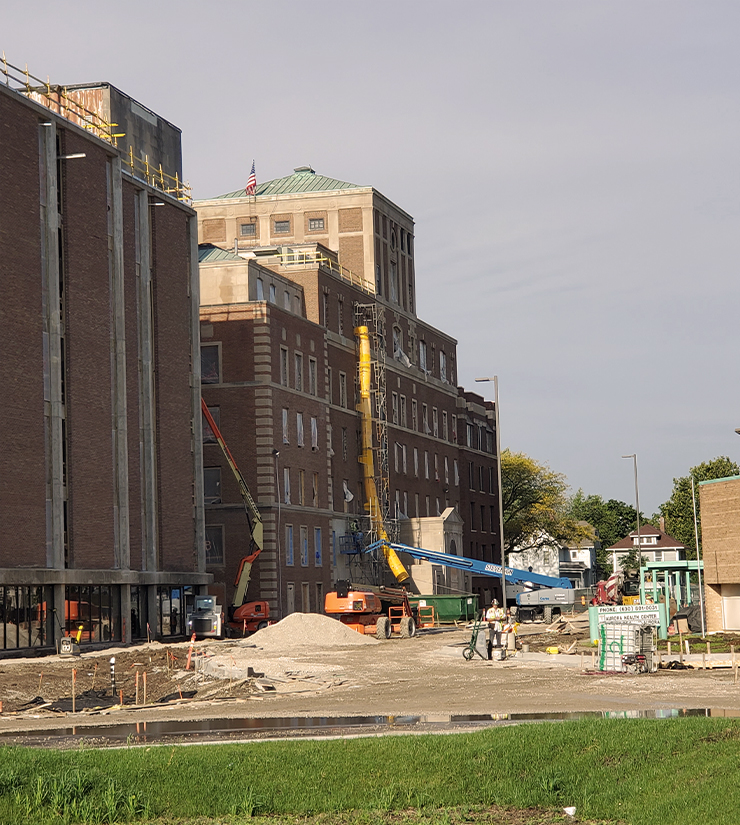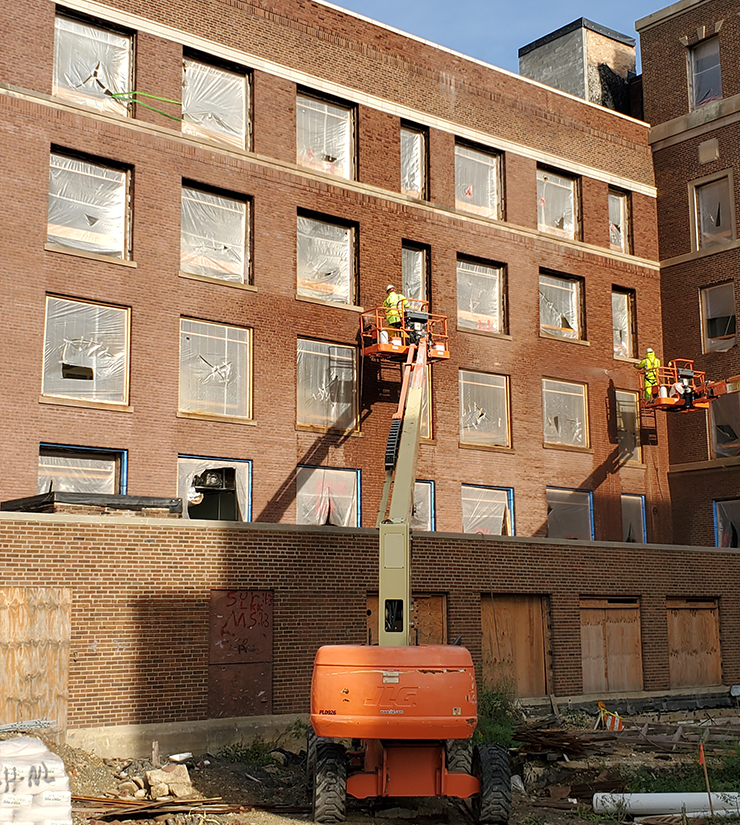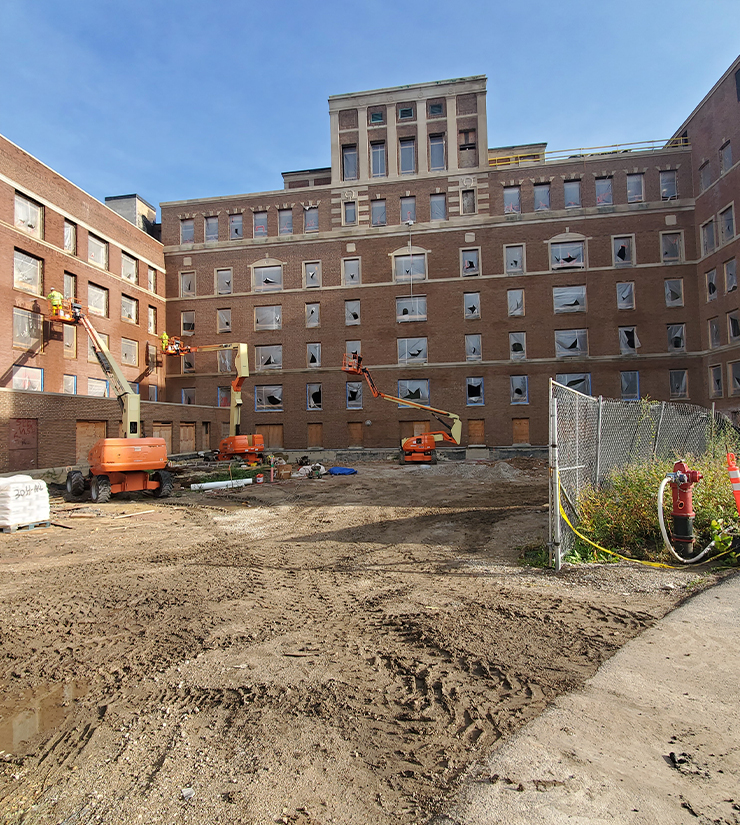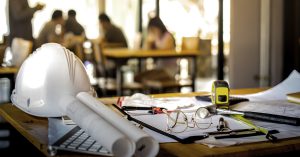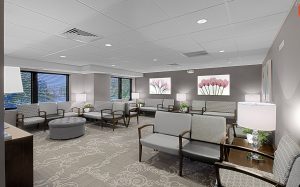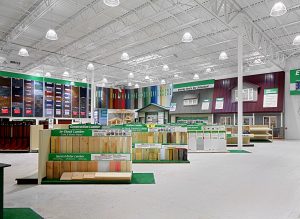We like to think we’re not just completing construction projects: we’re building a better world.
That’s just how we feel about Bloomhaven.
As a new interconnected campus, Bloomhaven brings new life to the old Copley space had been a shuttered hospital for decades, but we knew it could be something more. So did Fox Valley Developers, the company that introduced us to the project. As community-focused entrepreneurs ourselves, we shared their vision. Even better, the job came with deep personal roots, as the partners went to high school together. The board encompassed a wide swing of vital industries: a lawyer, a burn surgeon, a construction pro.
Our plan was to repurpose the historic buildings: Bardwell Senior Living, a medical office facility, the East Aurora School District 131 Administrative Building, and finally Weston Bridges, an Independent Apartment Community (or IAC) for individuals with intellectual or developmental disabilities.
But first, we had to make the dream a reality. The city had bids to demolish the abandoned hospital: they were looking to make it a park. Furthermore, there was even a pending lawsuit due to its abandoned nature. But we came together with a new use for this blighted property, and give back to the city of Aurora. It would be a massive undertaking, but the team was up for the challenge. When you work and plan construction, you have to know how all the puzzle pieces fit together: by understanding what our clients were looking for, and knowing what the market could handle, we embarked on an epic journey.
After winning the business, we first did abatement (selected demolition) to clear asbestos. It was a huge task, but crucial for the safety of residents and to get architects in to do measurements and begin planning the layouts.
In the wake of the COVID-19 pandemic and its resulting supply chain issues, we faced long lead times on vital materials, but we were able to plan accordingly and overcome. Workers were also spread out to accommodate social distancing guidelines, meeting the challenge with high spirits.
We also had to get the historic buildings registered for tax credits with the National Park Services to be on the Historic Registry.
As such, we also needed to match the original materials in respect to its heritage status: the floors of the 1932 building needed to be original terrazzo, window frames needed to be period-accurate, plaster moldings and millwork needed to be exact. As the eldest buildings on the property date back to 1888, this was a unique challenge, but Konrad Construction always finishes the job.
We’ve balanced old hardware with a modern aesthetic, replicated the needed features while also designing for modern comfort and convenience. There are many different building styles across the eras; from all-wood to poured concrete, we hope this walk through time is a testament to our skill and adaptability.
It takes experience and determination to breathe new life into old buildings, a seasoned hand with a youthful vigor. We’re proud to say this new development is embraced by the surrounding community. It will stand as a beacon of what’s possible for another hundred years.


